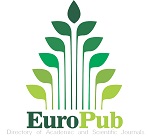Exploring The Phonological Analysis of Vowels Sounds Among Speakers of Pakistani English
Abstract
The linguistic evolution of English in Pakistan over the past century has witnessed a significant transformation, marking the end of deviations, inter-language, and deficient varieties. Pakistani English (PE) has emerged as an independent linguistic entity among non-native varieties. This research specifically explores the vowel sounds in Pakistani English, focusing on a diverse sample of fifty individuals aged between twenty and thirty from Sahiwal city. The participants, primarily Punjabi speakers of Urdu, were chosen for their representation of the linguistic landscape in this region. Through detailed phonetic analysis of recorded speech samples, the study highlights the meticulous restructuring of English sounds in Pakistani English. While some phonemes align with Received Pronunciation (RP), others exhibit substitutions with near-equivalents from Urdu. The findings underscore the presence of an educated Pakistani accent, closely resembling British RP, with distinctive segmental and non-segmental pronunciation features. This research contributes to our understanding of the unique linguistic characteristics of Pakistani English.
Keywords: Non-Native Variety, Received Pronunciation, Vowel Phonemes, Pronunciation.








